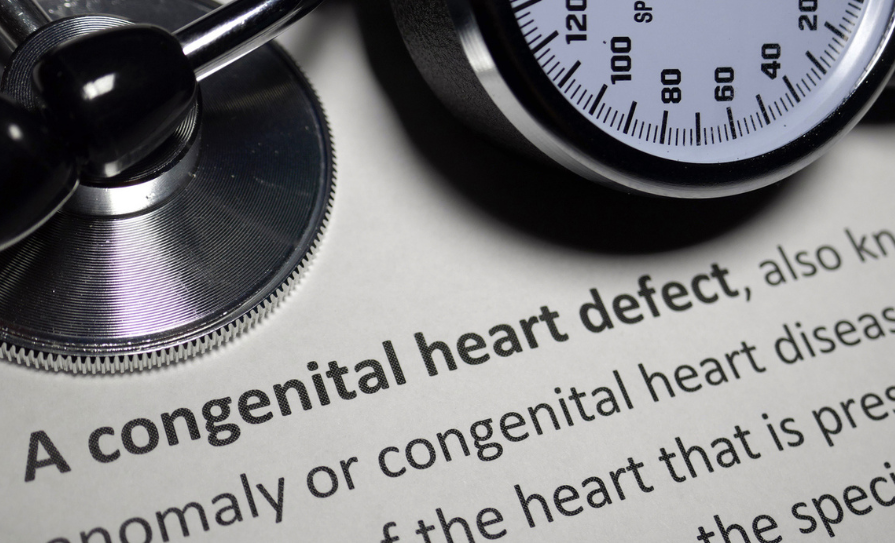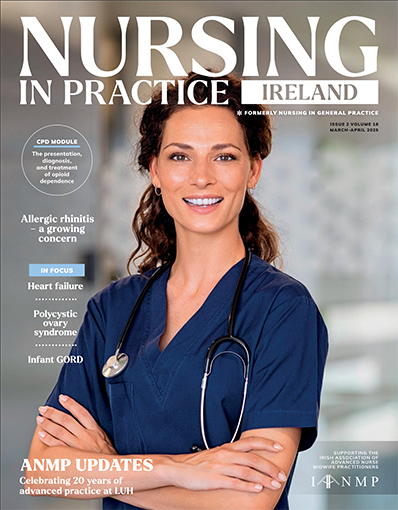Reference: May-Jun 2024 | Issue 3 | Vol 17 | Page 32
People born with a congenital heart defect (CHD) are living significantly longer due to the steady progress in medicine and surgery. As such, regarding the whole population of individuals currently living with a CHD, adult patients (ACHD, adult congenital heart disease) outnumber newborns and children affected by the same condition (70 per cent vs 30 per cent).1,2
Many women can develop strong urges to start a family as they grow older. Unfortunately, cardiac disease is still the main cause of death in pregnant women. Cardiovascular diseases complicate 1-to-4 per cent of all pregnancies and about 80 per cent of those diseases are congenital.3,4
Pregnancy is characterised by many significant haemodynamic changes such as raised circulating blood volume, increased stroke volume and maternal heart rate, and decreased peripheral vascular resistances.5 As such, it can be really challenging being pregnant while ventricular systolic function is reduced, pulmonary pressure increased, or with a circulation supported by a single ventricle. Moreover, foetal mortality is also raised, with an average miscarriage rate of approximately 15 per cent. This in turn can reach a peak of 40 per cent in those with a single ventricle physiology corrected according to the Fontan procedure or in those who are cyanotic.6 Again, the risk of CHD recurrence cannot be ignored, mostly for pathologies involving the left and right ventricular outflow tracts, as well as atrial and ventricular septal defects.5
The ROPAC registry
The vast majority of information regarding ACHD women who are pregnant is from the Registry of Pregnancy and Cardiac disease (ROPAC), which was established in 2007 with the involvement of many centres, mostly European ones. More than 6,000 pregnant women have been enrolled so far. Over half of them have ACHD (57 per cent), whereas 29 per cent are affected by valvular disease.7 The ROPAC shows that maternal mortality is higher in patients with pulmonary arterial hypertension (+0.6 per cent compared to the general population). Heart failure was observed in 11 per cent of the sample and significant arrhythmias in 2 per cent. The main risk factors for maternal complications during pregnancy are pre-pregnancy heart failure with a functional class New York Heart Association (NYHA) >2, systemic ventricle ejection fraction less than 40 per cent, modified World Health Organisation (m-WHO) class of risk IV, and anticoagulant therapy.7
Risk stratification
Maternal and foetal risk of adverse events should be assessed before becoming pregnant.8 Many scoring systems have been proposed in the field. The most useful of them is the m-WHO classification, which has been promoted since the release of the European Society of Cardiology Guidelines for the Management of Cardiovascular Diseases during Pregnancy. All maternal risk factors have been taken together, including background and comorbidities.9,10 Four risk classes have been identified according to the increased risk:
- m-WHO I: Includes very low risk pregnancies. One or two examinations during pregnancy are enough;
- m-WHO II: Pregnancy is at low-to-moderate risk. The suggested follow-up consists of an examination every three months;
- m-WHO III: There is a significantly increased risk of maternal mortality or severe morbidity. The rate of adverse events is 19-to-27 per cent. Pregnancy is not recommended. If the patient wants to proceed with pregnancy at her own risk, she should be seen every month or two months;
- m-WHO IV: The risk of maternal mortality or severe morbidity is extremely high. The rate of adverse events is 40-to-100 per cent. Pregnancy is contraindicated. If the patient wants to proceed with pregnancy at her own risk, she should be seen every month or two months.
All the four m-WHO risk classes are strongly correlated with the risk of maternal, foetal, and obstetric complications.9 Pregnant women with m-WHO risk class I may not need to be managed in a tertiary care hospital, while patients with m-WHO risk class II or higher should always receive care in this type of setting. Delivery should take place in a hospital setting equipped to provide adequate support to both mother and infant.11 Undergoing pre-pregnancy exercise stress testing has been suggested to identify ACHD women at increased risk of cardiac complications. In fact, chronotropic incompetence during exercise is an independent predictor of adverse events such as heart failure and arrhythmias in females who fail to adequately increase heart rate on exertion.12
Counselling and multidisciplinary team involvement
Counselling plays a pivotal role in ACHD women who are pregnant to help both the women and the couples in coping with stressful situations. It can be divided into genetic, cardiological, and obstetric counselling, which in turn requires the involvement of a multidisciplinary team (gynaecologist, midwife, cardiologist, anaesthesiologist, neonatologist).13 This is in order to inform the woman/couple about the maternal and foetal risk along with the risk of obstetric complications.
Cardiological counselling is quite complex and should be based on a personalised, ‘tailored’ approach with the goal of planning pregnancy.14 It is very important to discuss becoming pregnant before any worsening of clinical conditions occurs and to avoid eventually fixing any residual complication before getting pregnant.
Again, in ACHD women with a risk class of risk m-WHO IV, pregnancy should be strongly discouraged.5 Ideally pre-conception counselling, especially for moderate-to-high risk ACHD, should start in adolescence, including providing information about contraception. ACHD women, even those with complex CHD, are often asymptomatic or have few symptoms and assume there is no contraindication regarding pregnancy.15 Major cardiac complications during pregnancy include onset of arrhythmias, heart failure, fainting episodes, chest pain, and thromboembolic events (notably in women with mechanical heart valves).16 Generally speaking, valvular insufficiency, even when severe, is well tolerated during pregnancy, since peripheral vascular resistance (afterload) diminishes.17 On the contrary, stenosis is poorly tolerated and may lead to pulmonary oedema.18 Cardiac contractility must be monitored since it is crucial in predicting the outcome of pregnancy.7
The cardiac conditions associated with m-WHO classes of risk III and IV are summarised in Table 1.9
| m-WHO class III | m-WHO class IV |
|---|---|
| Surgically unrepaired cyanotic heart defect | Pulmonary arterial hypertension |
| Moderate left ventricular systolic dysfunction | Severe left ventricular systolic dysfunction |
| Systemic right ventricle with normal or slightly reduced function | Systemic right ventricle with moderately or severely reduced function |
| Uncomplicated Fontan circulation | Fontan circulation with any complication |
| Severe asymptomatic aortic stenosis | Severe symptomatic aortic stenosis |
| Moderate mitral stenosis | Severe mitral stenosis |
| Moderate aortic dilatation (40-45mm in Marfan syndrome or other heritable thoracic aortic disease, 40-45mm in bicuspid aortic valve, 20-25mm/m² in Turner syndrome) | Severe aortic dilatation (over 45mm in Marfan syndrome or other heritable thoracic aortic disease, over 45mm in bicuspid aortic valve, over 25mm/m² in Turner syndrome) |
| Metallic valve | Severe aortic coarctation |
TABLE 1: m-WHO classes of risk (III and IV) and associated cardiac conditions
Management of delivery
With a view to minimising the risk of the onset of heart failure, delivery beyond 40 weeks gestation is not recommended. The gold standard for delivery is week 37-to-38, but for mothers with complex and hypercomplex CHD, delivery can be brought forward. In these cases, prophylactic corticosteroids are needed to expedite foetal lung maturity and prevent respiratory distress syndrome.8,19,20 Apart from rare exceptions, vaginal delivery should be preferred, as compared with Caesarean section, complications (haemorrhage, infection, haemodynamic disturbances, coagulation disorders) are less frequent.21 Caesarean section is limited to a few indications, such as patients who are still taking anticoagulants, in Marfan patients with aortic dilatation/dissection, severe aortic stenosis, and Eisenmenger syndrome.19 Epidural analgesia is preferred. ACHD women should be monitored closely for six weeks after delivery.19
Conclusions
Pregnancy can be a reality for most ACHD women, though not all, and it is not without risk. Pregnancy is always contraindicated in patients with pulmonary arterial hypertension, irrespective of its aetiology. However, patients with single ventricle and Fontan physiology can become pregnant and deliver successfully. Pre-pregnancy risk should be discussed in specialised centres, especially for patients in risk classes m-WHO III and IV. All pregnancies, particularly those at higher risk, should be managed in a tertiary care centre capable of providing the necessary assistance to both the mother and infant. The approach should be personalised. Follow-up during pregnancy and delivery should be provided in all cases. The desire for parenthood, which at times is extreme in ACHD women, may often be accomplished, thus providing a ray of hope in the lives of these patients.
References
1. Bassareo PP, Mcmahon CJ, Prendiville T, et al. Planning transition of care for adolescents affected by congenital heart disease: The Irish national pathway. Paediatr Cardiol. 2023;44(1):24-33.
2. Taylor J. Congenital heart disease is no longer a paediatric specialty. Eur Heart J. 2014;35(11):673-674.
3. Curtis SL, Marsden-Williams J, Sullivan C, et al. Current trends in the management of heart disease in pregnancy. Int J Cardiol. 2009;133(1):62-69.
4. Siu SC, Sermer M, Colman JM, et al. Prospective multicenter study of pregnancy outcomes in women with heart disease. Circulation. 2001;104(5):515-521.
5. Bianca I, Geraci G, Gulizia MM, et al. ANMCO/SICP/SIGO Consensus document: Pregnancy and congenital heart disease. G Ital Cardiol. (Rome) 2016;17: 687-755.
6. Drenthen W, Pieper PG, Roos-Hesselink JW, et al. Outcome of pregnancy in women with congenital heart disease: A literature review. J Am Coll Cardiol. 2007;49(24):2303-2311.
7. Roos-Hesselink J, Baris L, Johnson M, et al. Pregnancy outcomes in women with cardiovascular disease: Evolving trends over 10 years in the ESC Registry of Pregnancy And Cardiac disease (ROPAC). Eur Heart J. 2019;40(47):3848-3855.
8. Pieper PG. Pre-pregnancy risk assessment and counselling of the cardiac patient. Neth Heart J. 2011;19(11):477-481.
9. Regitz-Zagrosek V, Roos-Hesselink JW, Bauersachs J, et al. 2018 ESC Guidelines for the management of cardiovascular diseases during pregnancy. Eur Heart J. 2018; 39:3165-3241.
10. Thorne S, MacGregor A, Nelson-Piercy C. Risks of contraception and pregnancy in heart disease. Heart. 2006;92(10):1520-1525.
11. Regitz-Zagrosek V, Lundqvist CB, Borghi C, et al. ESC Guidelines on the management of cardiovascular diseases during pregnancy: The Task Force on the Management of Cardiovascular Diseases during Pregnancy of the European Society of Cardiology. Eur Heart J. 2011; 32: 3147–3197.
12. Lui GK, Silversides CK, Khairy P, et al. Heart rate response during exercise and pregnancy outcome in women with congenital heart disease. Circulation. 2011;123(3):242-248.
13. Greutmann M, Pieper PG. Pregnancy in women with congenital heart disease. Eur Heart J. 2015;36(37):2491-2499.
14. Hinton RB Jr, Martin LJ, Tabangin ME, et al. Hypoplastic left heart syndrome is heritable. J Am Coll Cardiol. 2007;50(16):1590-1595.
15. Montis S, Bassareo PP, Follese C, et al. Counseling and informed consent: The experience in a pediatric cardiology unit. How to communicate a pathological diagnosis. Paediatr Med Chir. 2010;32(5):206-210.
16. Panebianco M, Perrone MA, Gagliardi MG, et al. Pregnancy in patients with moderate and highly complex congenital heart disease. Healthcare (Basel). 2023;11(11):1592.
17. Otto CM. Clinical practice. Evaluation and management of chronic mitral regurgitation. N Engl J Med. 2001;345(10):740-746.
18. Arnolds DE, Dean C, Minhaj M, et al. Cardiac disease in pregnancy: Hypertrophic obstructive cardiomyopathy and pulmonic stenosis. J Cardiothorac Vasc Anesth. 2021;35(12):3806-3818.
19. Lindley KJ, Conner SN, Cahill AG. Adult congenital heart disease in pregnancy. Obstet Gynecol Surv. 2015;70(6):397-407.
20. European Society of Gynecology, Association for European Paediatric Cardiology, German Society for Gender Medicine (DGesGM), et al. ESC Guidelines on the management of cardiovascular diseases during pregnancy: The Task Force on the Management of Cardiovascular Diseases during Pregnancy of the European Society of Cardiology. Eur Heart J. 2011; 32:3147-3197.
21. Baumgartner H, De Backer J, Babu-Narayan SV, et al. 2020 ESC Guidelines for the management of adult congenital heart disease. Eur Heart J. 2021;42(6):563-645.













Leave a Reply
You must be logged in to post a comment.